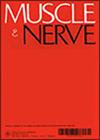以呼吸困难为主要表现特征的神经肌肉疾病的评估和管理
IF 2.8
3区 医学
Q2 CLINICAL NEUROLOGY
引用次数: 0
摘要
呼吸困难是神经肌肉疾病的常见症状,虽然有多种因素,但通常是由于呼吸肌受累、相关的肌肉骨骼变化(如脊柱侧弯)或某些神经肌肉疾病中的心肌病所致。临床病史可引起呼吸暂停、呼吸困难、睡眠障碍、吞咽困难、咳嗽无力和分泌物清除困难等症状。检查对于协助诊断潜在的神经系统疾病和确定呼吸困难是由心源性还是肺源性引起至关重要。应特别注意可能出现的肌肉缺失、辅助呼吸肌的使用、颈部屈伸困难、胸腹矛盾、会话性呼吸困难、心脏检查,并应针对可疑的鉴别诊断进行详细的神经系统检查。肺功能检查包括坐位和仰卧位肺活量测定、吸气和呼气肌力测量、咳嗽峰值流量、嗅鼻吸气压力、脉搏血氧饱和度、经皮二氧化碳和动脉血气,这些检查有助于确定呼吸肌受累的程度、评估高碳酸血症或低氧血症呼吸衰竭,并在适当的时候为患者进行无创通气。其他检查包括嗅觉透视或膈肌超声动态成像以及膈肌电图。多导睡眠图适用于无法用其他方法解释的睡眠相关症状。无创通气可减轻呼吸困难和夜间症状,提高生活质量,延长存活时间。针对神经肌肉疾病的治疗可能有助于控制病情或有利地改变病程。对于难以清除分泌物的患者,使用机械充气-排气、振荡装置支持呼气功能可降低吸入风险。本文章由计算机程序翻译,如有差异,请以英文原文为准。
Evaluation and management of dyspnea as the dominant presenting feature in neuromuscular disorders
Dyspnea is a common symptom in neuromuscular disorders and, although multifactorial, it is usually due to respiratory muscle involvement, associated musculoskeletal changes such as scoliosis or, in certain neuromuscular conditions, cardiomyopathy. Clinical history can elicit symptoms such as orthopnea, trepopnea, sleep disruption, dysphagia, weak cough, and difficulty with secretion clearance. The examination is essential to assist with the diagnosis of an underlying neurologic disorder and determine whether dyspnea is from a cardiac or pulmonary origin. Specific attention should be given to possible muscle loss, use of accessory muscles of breathing, difficulty with neck flexion/extension, presence of thoraco‐abdominal paradox, conversational dyspnea, cardiac examination, and should include a detailed neurological examination directed at the suspected differential diagnosis. Pulmonary function testing including sitting and supine spirometry, measures of inspiratory and expiratory muscle strength, cough peak flow, sniff nasal inspiratory pressure, pulse oximetry, transcutaneous CO2 , and arterial blood gases will help determine the extent of the respiratory muscle involvement, assess for hypercapnic or hypoxemic respiratory failure, and qualify the patient for noninvasive ventilation when appropriate. Additional testing includes dynamic imaging with sniff fluoroscopy or diaphragm ultrasound, and diaphragm electromyography. Polysomnography is indicated for sleep related symptoms that are not otherwise explained. Noninvasive ventilation alleviates dyspnea and nocturnal symptoms, improves quality of life, and prolongs survival. Therapy targeted at neuromuscular disorders may help control the disease or favorably modify its course. For patients who have difficulty with secretion clearance, support of expiratory function with mechanical insufflation‐exsufflation, oscillatory devices can reduce the aspiration risk.
求助全文
通过发布文献求助,成功后即可免费获取论文全文。
去求助
来源期刊

Muscle & Nerve
医学-临床神经学
CiteScore
6.40
自引率
5.90%
发文量
287
审稿时长
3-6 weeks
期刊介绍:
Muscle & Nerve is an international and interdisciplinary publication of original contributions, in both health and disease, concerning studies of the muscle, the neuromuscular junction, the peripheral motor, sensory and autonomic neurons, and the central nervous system where the behavior of the peripheral nervous system is clarified. Appearing monthly, Muscle & Nerve publishes clinical studies and clinically relevant research reports in the fields of anatomy, biochemistry, cell biology, electrophysiology and electrodiagnosis, epidemiology, genetics, immunology, pathology, pharmacology, physiology, toxicology, and virology. The Journal welcomes articles and reports on basic clinical electrophysiology and electrodiagnosis. We expedite some papers dealing with timely topics to keep up with the fast-moving pace of science, based on the referees'' recommendation.
 求助内容:
求助内容: 应助结果提醒方式:
应助结果提醒方式:


